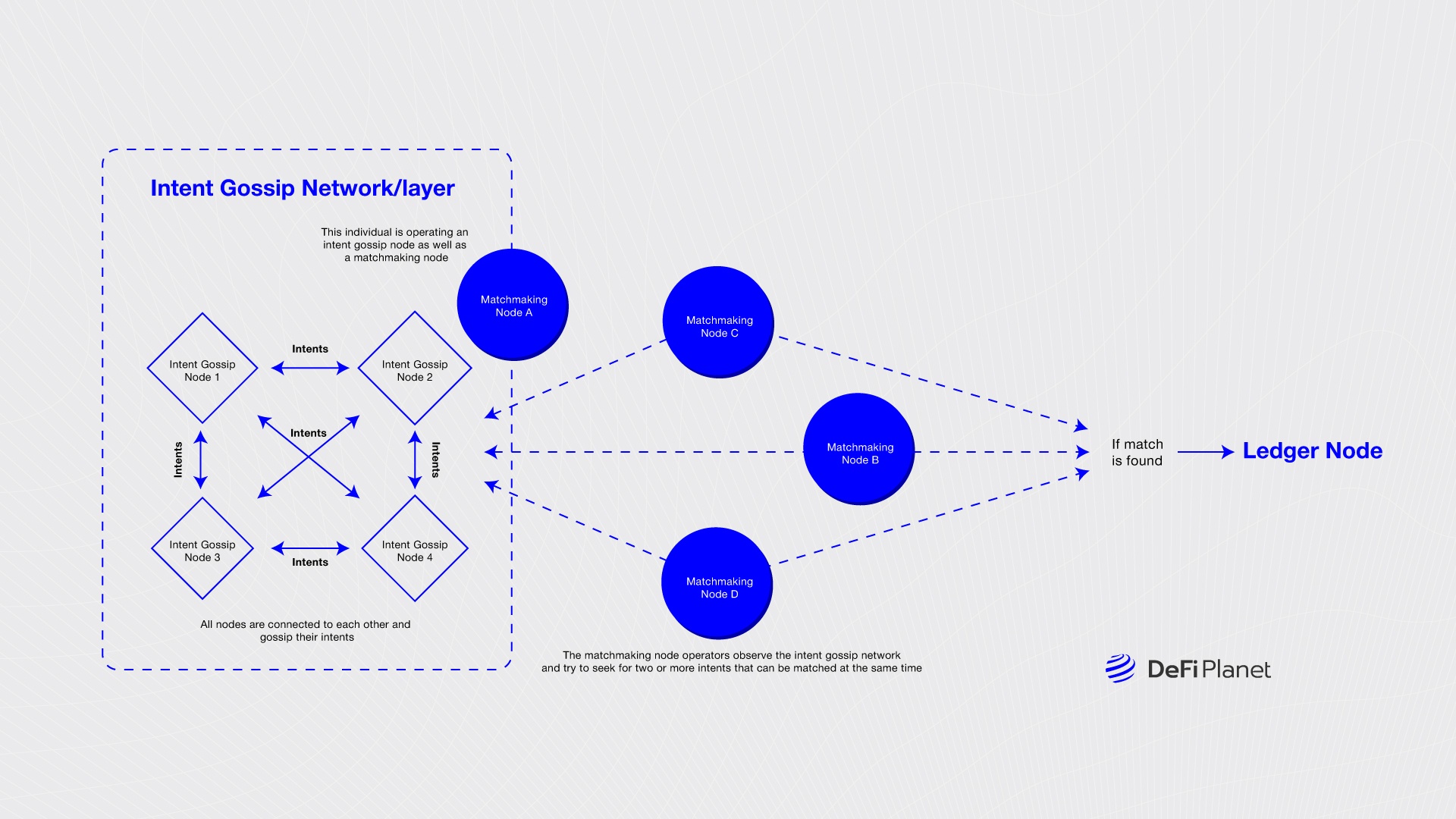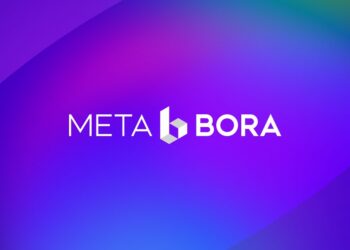Imagine walking into a bustling market with a long shopping list. Instead of wandering through countless stalls, you hand the list to a trusted friend who knows the market inside and out. They take care of everything—finding the best deals, carrying the bags, and making sure you get exactly what you need.
That’s the promise of intent-centric design in Web3: simplifying user interactions by focusing on what users want, not the technical steps required to make it happen.
Understanding Intent-Centric Design
In traditional blockchain systems, users must manually specify every detail of a transaction – recipient addresses, token amounts, gas fees, even which network to use. This complexity is intimidating for newcomers and cumbersome even for experienced users.
Intent-centric design flips this process. Instead of detailing each step, users express only their desired outcome—their intent. The system then figures out the best way to achieve it.
For instance, rather than navigating multiple steps to swap tokens across different platforms, a user simply states, “I want to exchange Token A for Token B.” The system then handles everything behind the scenes, streamlining the blockchain user experience.
This shift is about making blockchain easier to use; it’s about fundamentally changing how we think about interacting with decentralized systems. Instead of forcing users to understand the inner workings of wallets, smart contracts, gas estimations, and multi-chain navigation, intent-centric architecture places the focus on what the user wants to do, not how it gets done.
Think of it like you are trying to book a flight online, in a traditional setup, you’d have to go to multiple websites, compare prices, choose seats, add luggage, and manually input payment details. Now imagine simply saying, “I want to fly to Paris next weekend with the cheapest direct flight,” and the system does the rest; searching, filtering, booking, and confirming. That’s the kind of seamless experience intent-centric design aims to bring to Web3.

In blockchain terms, this means that instead of figuring out which decentralized exchange (DEX) has the best rate, calculating slippage, or dealing with bridging assets between networks, the user’s intent is passed to a network of transaction builders or solvers. These solvers compete to fulfill the user’s intent in the most optimal way which is similar to how Google’s search algorithm finds the best match for your query.
This design makes Web3 more inclusive because many people who could benefit from decentralized finance (DeFi), NFTs, or decentralized identity systems are held back by the complex interfaces and jargon-heavy processes. With intent-centric systems, people can interact with blockchain services more like they use regular apps – by describing what they want and letting the tech take care of the rest. Ultimately, this shift could help bring millions of people into the Web3 ecosystem, not by teaching them every detail of how it works, but by designing systems that don’t require them to know those details in the first place.
The Role of Solvers and Transaction Builders
Central to intent-centric architecture are “solvers” or “transaction builders” and these entities interpret user intents and execute the necessary actions to fulfill them. While acting like personal assistants, solvers optimize transactions for efficiency, cost, and speed, ensuring users achieve their goals without delving into technical intricacies.
This approach not only enhances user experience but also democratizes access to blockchain services, making them more approachable for a broader audience. In an intent-centric blockchain system, solvers or sometimes called transaction builders play a crucial role. One could think of them as super-smart digital assistants that understand what you want and go out into the blockchain world to make it happen. When you say, “I want to buy this NFT” or “I want to lend my crypto for interest,” the solver figures out the best, fastest, and cheapest way to do it, without you needing to touch a single complex setting or worry about which network or app to use.
These solvers scan different blockchains, decentralized exchanges, and protocols, comparing options and finding the best way to fulfill your intent and instead of you needing to jump through hoops, switch networks, approve tokens, or calculate fees, the solver handles all that in the background. This saves time, reduces the chance of making mistakes, and makes using crypto feel much more like using everyday apps like Google Pay or Spotify.
It’s not just about convenience, as this system makes blockchain more open and fair and right now, using DeFi or NFTs is often limited to people who already understand how wallets, gas fees, and protocols work. With solvers doing the heavy lifting, even a complete beginner can use Web3 tools without feeling overwhelmed and that means more people can safely and confidently participate in the blockchain economy; whether they’re investing, trading, creating, or simply exploring what Web3 has to offer.
Enhancing Blockchain User Experience (UX)

Enhancing the user experience (UX) in blockchain is one of the most important steps toward making Web3 accessible to everyone and not just tech-savvy developers or crypto enthusiasts. Right now, using blockchain applications can feel like solving a puzzle with users expected to understand complex wallet addresses, gas fees, transaction confirmations, bridging assets across chains, and interacting with different protocols; all just to do something as simple as trading a token or buying a digital collectible.
Intent-centric design changes all that by shifting from task-based to goal-based interaction, it allows users to focus on what they want to do rather than how to do it and instead of forcing users to manually choose the correct blockchain, token pair, fee setting, and platform, intent-centric systems ask users for their intent, like “swap my USDC for ETH at the best price”, and then automatically handle the rest. This abstraction of complexity dramatically improves the blockchain user experience, especially for newcomers.
Just like how modern smartphones made technology more accessible by hiding complex code behind easy-to-use interfaces, intent-centric design hides blockchain’s complexity behind smooth, intuitive workflows. This shift doesn’t just make things easier; it opens the door to mass adoption.
Another huge benefit of this design approach is personalization, because the system understands your goals and preferences, it can tailor suggestions, routes, and features to your behavior. For example, if you regularly trade small amounts of tokens and prefer speed over savings, the system can optimize for that. If you’re more cost-conscious and willing to wait a bit longer, it can find cheaper, slower options. This creates a more meaningful and user-friendly interaction with decentralized apps (dApps), similar to how Spotify recommends songs based on your listening habits or how Google Maps suggests faster routes based on your driving behavior.
This kind of responsive, personalized UX isn’t just a luxury; it’s essential for Web3 to compete with traditional web apps and fintech tools. If blockchain hopes to serve billions of people, it needs to be as easy to use as Instagram or PayPal, without sacrificing decentralization and user control. Intent-centric UX is one of the most promising ways to achieve that balance, combining powerful blockchain infrastructure with seamless, user-first design.
Innovations Driving Intent-Centric Architecture
Several projects are pioneering intent-centric design:
- Anoma: Anoma introduces a distributed operating system tailored for intent-centric applications. It enables users to express complex intents, which are then matched and executed across various blockchains, promoting seamless interoperability.
- SUAVE (Single Unified Auction for Value Expression): Developed by Flashbots, SUAVE aims to optimize transaction execution by aggregating user intents and facilitating efficient block building. This approach addresses challenges like Miner Extractable Value (MEV) and enhances transaction fairness.
These innovations exemplify the potential of intent-centric architecture to revolutionize blockchain interactions.
Addressing Challenges and Ensuring Security

While intent-centric design offers numerous benefits, it also introduces challenges:
- Security Concerns: Delegating transaction execution to solvers necessitates robust security measures to prevent malicious activities and ensure user trust.
- Privacy Implications: Sharing intents with solvers could expose sensitive information. Implementing privacy-preserving techniques, such as zero-knowledge proofs, can mitigate these risks.
- Decentralization: Relying on a limited number of solvers may lead to centralization. Encouraging a diverse and decentralized network of solvers is crucial to maintain the ethos of blockchain technology.
Addressing these challenges is essential to realize the full potential of intent-centric systems.
The Future of Web3 UX
The future of Web3 UX lies in making blockchain technology as seamless and intuitive as the apps we use every day and intent-centric architecture is a big step in that direction. This design approach marks a paradigm shift, where the focus is no longer on forcing users to navigate complicated technical steps but instead on understanding and fulfilling what the user wants to achieve, which is their intent. This means that whether someone wants to swap tokens, mint an NFT, or vote in a DAO, they won’t have to deal with multiple dApps, bridges, or manual gas settings and the system will handle those details automatically, delivering an experience that feels natural, efficient, and smart.
By prioritizing user intent over procedural steps, blockchain interactions become more accessible to everyone, not just coders or crypto veterans. This reduces friction, lowers the entry barrier, and makes Web3 applications feel less like experimental tools and more like polished digital services. It also boosts efficiency, as solvers and transaction builders can optimize each interaction for speed, cost, and success.
This evolution aligns perfectly with the broader vision of decentralized technology; to create systems that are not only transparent and secure but also inclusive, user-friendly, and scalable for mass adoption. As Web3 continues to evolve, embracing intent-centric design could be the key to bridging the gap between powerful blockchain infrastructure and real-world usability. If widely implemented, it has the potential to drive the next wave of innovation in crypto and make Web3 a natural part of everyday digital life.
Disclaimer: This article is intended solely for informational purposes and should not be considered trading or investment advice. Nothing herein should be construed as financial, legal, or tax advice. Trading or investing in cryptocurrencies carries a considerable risk of financial loss. Always conduct due diligence.
If you want to read more market analyses like this one, visit DeFi Planet and follow us on Twitter, LinkedIn, Facebook, Instagram, and CoinMarketCap Community.
Take control of your crypto portfolio with MARKETS PRO, DeFi Planet’s suite of analytics tools.”





















